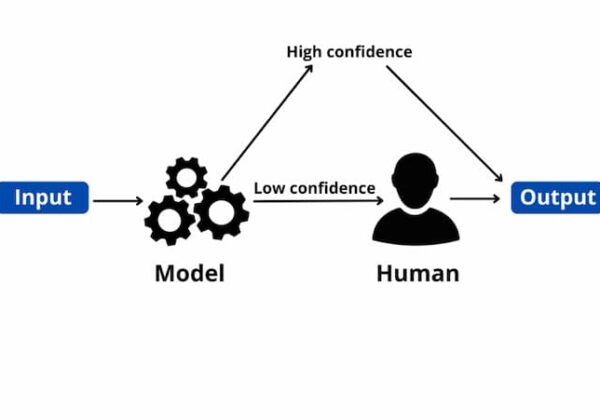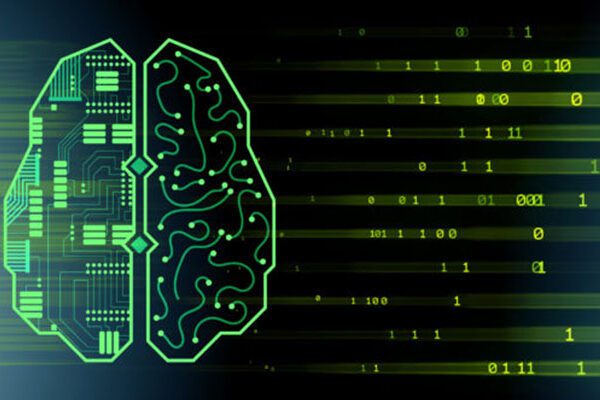A machine learning (ML) training model is a procedure that provides an ML algorithm with enough training data to learn from.
ML models can be trained to help businesses in a variety of ways, including by processing massive volumes of data quickly, finding patterns, spotting anomalies, or testing correlations that would be challenging for a human to do without assistance.
This article provides a thorough introduction to machine learning model training. If you’re curious, read on!
Table of Contents
What Is Model Training?
The core of the data science development lifecycle is model training, where the data science team works to optimize the weights and biases of an algorithm to reduce the loss function over the prediction range. Loss functions specify how to improve ML algorithms. Depending on the project objectives, the type of data used, and the type of algorithm, a data science team may use various types of loss functions.
When a supervised learning technique is applied, model training develops a mathematical representation of the relationship between the data features and a target label. It builds a mathematical model from the data features themselves in unsupervised learning.

Steps To Create A Machine Learning Model
A machine learning model is created using seven main steps. An outline of each of these steps is provided below in brief:
Defining The Problem
The first step in determining the goals of an ML model is to define the problem statement. As a result of this step, it is also possible to identify the appropriate inputs and their corresponding outputs, “what is the input data?” and “what is the model trying to predict?” must be answered at this stage.
Data Collection
The problem statement must first be defined, and then an investigation and data collection are required. This is a crucial step in the development of an ML model because it will determine the model’s effectiveness based on the quantity and quality of the data used. Data can be gathered from pre-existing databases or can be built from the scratch
Preparing The Data
In order to get the data ready for model training, it must be profiled, formatted, and structured as necessary. The right data’s characteristics and attributes are chosen at this point. The execution time and outcomes are probably directly impacted by this stage. Additionally, this is the point where the data is divided into two groups: one for training the ML model and the other for model evaluation. At this stage, data pre-processing is also completed, including normalization, duplicate removal, and error correction.
Assigning Appropriate Model / Protocols
The objective that the ML model seeks to achieve must be taken into consideration when choosing and allocating a model or protocol. There are many models to choose from, including k-means, linear regression, and Bayesian. The kind of data being used has a significant impact on the models that are selected. Convolutional neural networks would be the best choice, for instance, when processing images, and k-means would be the best segmentation algorithm.
Training The Machine Model Or “the Model Training”
The ML algorithm is trained at this point by being fed datasets. It is at this point that learning occurs. The ML model’s prediction rate can be markedly increased through consistent training. The model’s weights must be initialized at random. This way the algorithm will learn to adjust the weights accordingly
Evaluating And Defining Measure Of Success
It will be necessary to evaluate the machine model using the “validation dataset.” In order to evaluate the model’s accuracy, this is helpful. It is essential for defending correlation to specify the success metrics based on the goals the model is meant to achieve.
Parameter Tuning
Accurate correlation requires choosing the appropriate parameter to modify in order to influence the ML model. Hyperparameters are a collection of parameters chosen based on their impact on the model architecture. Parameter tuning refers to the process of finding the hyperparameters by adjusting the model. The point of diminishing returns for validation should be as close to 100% accuracy as possible, with the correlation parameters clearly defined.
Importance Of Model Training
The first step in machine learning is model training, which produces a functional model that can then be tested, validated, and put into use. How well the model performs during training will ultimately determine how well it performs when it is eventually integrated into an application for the end users.
The model training phase’s two most important factors are the caliber of the training data and the algorithm selection. Training data is typically divided into two sets: one for training, the other for validation and testing.
The end-use case is the main factor that influences the algorithm choice. Algorithm-model complexity, performance, interpretability, resource needs, and speed are some additional factors that must always be taken into account. Selecting algorithms can be a time-consuming and challenging process due to the need to balance out these various requirements.
How Long Does It Take To Train A Machine Learning Model?
An ML model cannot be trained over a predetermined period of time or with a fixed number of iterations. The degree to which the success metrics are properly defined, the complexity of the model selection, and the caliber of the training data all have an impact on how long the training takes. The complexity of the model as well as factors like the training method and weight distribution are crucial. The length of training may also be influenced by other elements that are unrelated to the data or models, such as computing power and human capital. There is always room to improve model training because there are too many factors that can affect how long it takes.
Take Away
The process of training an ML model involves providing an ML algorithm (that is, the learning algorithm) with training data to learn from. The term ML model refers to the model artifact that is created by the training process.
Any organization hoping to build an effective machine learning model at scale must use a systematic and repeatable model training process.
A key component of this is having all of your tools, resources, libraries, and documentation in one enterprise platform that will promote collaboration rather than limit it.
Other Posts You Might Like:




